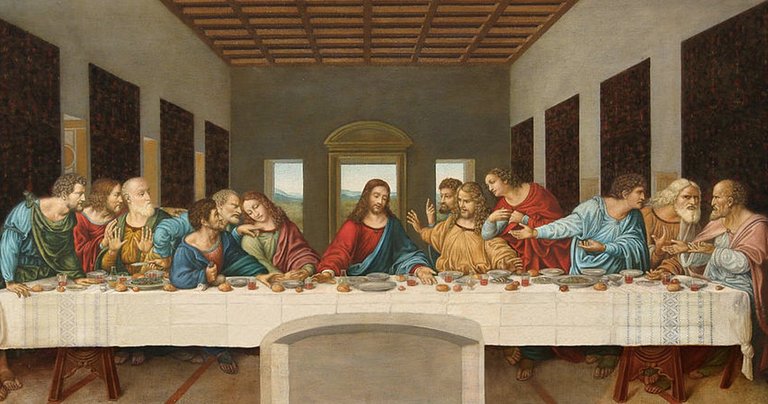In 1482 Leonardo da Vinci left Florence and went to Milan to the princely court of the Sforza, where he had applied as a bridge builder, fortress breaker, naval engineer, designer of dangerous guns, slingshot and combat vehicles, as a builder of water pipes and generally as an architect. Only incidentally does he mention in his application that he was also a painter and sculptor. Why leonardo emphasized his knowledge of engineering is entirely connected with the time. In those days, northern Italy was in a state of war, which is why the princes and lords of the country had little sense for the fine arts. They demanded weapons and cannons. Nevertheless, da Vinci was initially active in Milan as an organiser of festivals, making music, writing poems and designing stage sets for ballet and theatre performances.
In 1488 he began his famous fresco "The Last Supper", which was to decorate the ceiling of the dining room of the monastery of Santa Maria delle Grazie. But the work progressed slowly. For months nothing happened. The prior of the monastery became impatient. He complained to Ludovico Sforza, who commissioned the painting and had paid the artist a considerable advance.
Ludovico Sforza was outraged by da Vinci's slowness and immediately wanted to speak him. "Is it true that you haven't appeared in the monastery for a long time and left the painting unfinished?", he ruled over the artist. However, da Vinci remained calm and confirmed the prior's statements frankly and admitted that he hadn't done a brushstroke at the frisco for months. When asked why he didn't finish his work, da Vinci explained that he had already sketched the portraits of eleven apostles and now all he needed was a model for Judas. Every day he therefore strolls through Milan and tries to find a man who has the face of a traitor. But the only one who has been eligible so far was the prior of the monastery. But he did not want to ask him if he would make himself available as a model for Judas.
Ludovico Sforza was shocked and amused at the same time. He had nothing to counter this argument of the artist. When he told the prior about his conversation with da Vinci, he was so horrified that he promised Ludovico that he would not interfere in the artistic affairs any more and that he would will again go into the dining room until da Vinci had finished his work. The deal for that was that no one would know that the famous artist considered the known prior to be a suitable model for Judas.
For ten years, the client and the head of the monastery had to wait until Leonardo da Vinci had finally completed his work. One of the most important works of Italian painting was born. But from today's point of view, what happened then is a catastrophe. In the coming decades, people carelessly dealt with this valuable treasure of art history. Only a few years after its completion, a passage between the kitchen and the dining room was carved, and the lower part of the painting fell victim to it. The fumes that from now on flowed out of the kitchen gradually peeling off the paint from the walls. Two centuries later, during the occupation of Italy, Napoleon's soldiers transformed the dining room into a horse stable and finally a bomb in the second world war destroyed a large part of the image that had survived.

 Part 1
Part 1  Part 3
Part 3 


